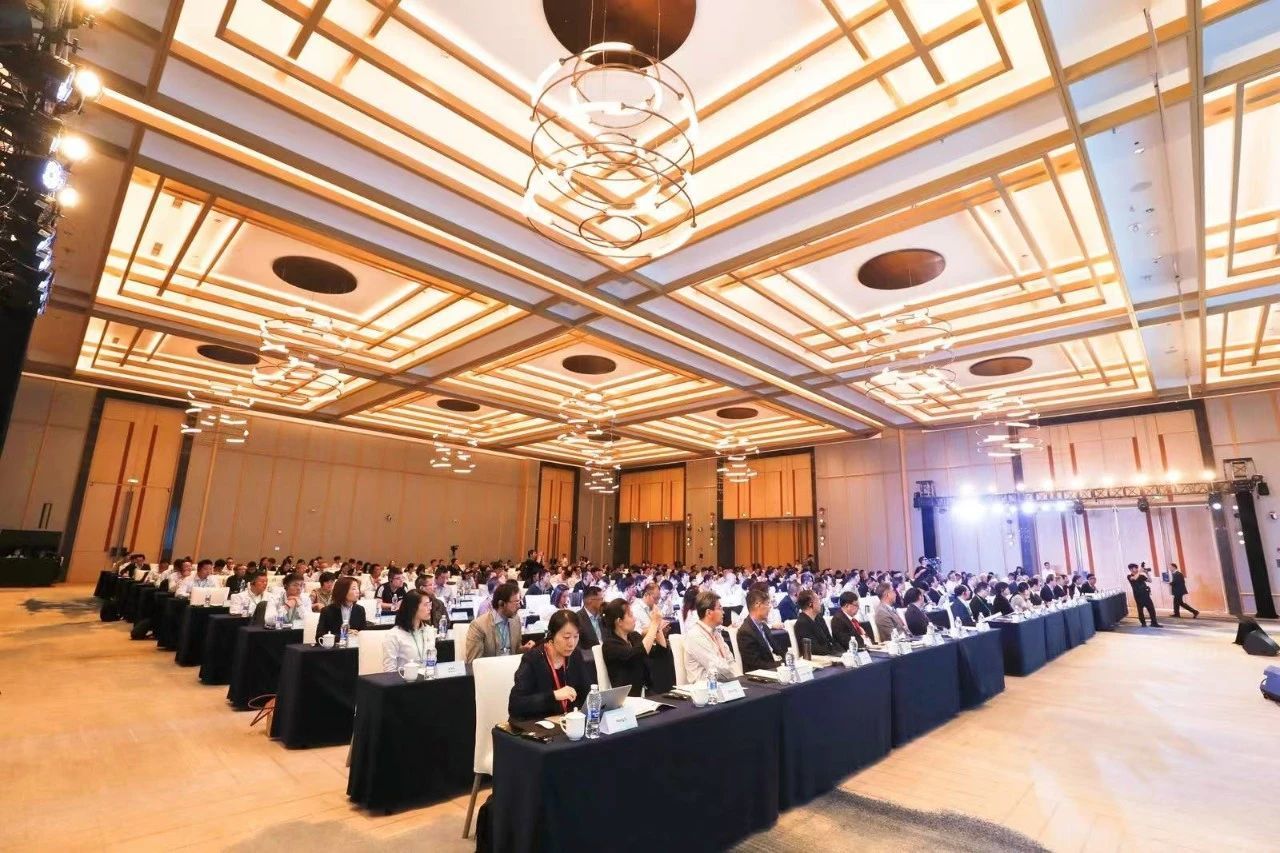10-23
→The 8th China (Hangzhou) Green Connection and Manufacturing 2024 Summit Forum is held.
2024-10-23
On October 21, 2024, the International Brazing, Diffusion Bonding, and Micro-Nano Connection Conference and the 8th China (Hangzhou) Green Connection and Manufacturing 2024 Summit Forum successfully opened in Hangzhou, Zhejiang Province. From October 21 to 23, the conference will focus on three directions: advanced brazing materials and brazing technology, diffusion bonding technology, and new technologies and applications in micro-nano connections, featuring multiple academic exchange activities including keynote speeches and thematic reports. Experts from various fields will discuss the theoretical and technical exploration in brazing, diffusion bonding, and micro-nano connection, promoting the integration of industry, academia, and research, and contributing to the high-quality development of the industry. This conference is hosted by the Welding Branch of the Chinese Mechanical Engineering Society (hereinafter referred to as "Welding Branch") and co-organized by Hangzhou Huaguang Welding New Materials Co., Ltd., Zhejiang University of Technology, the National Key Laboratory of Precision Welding and Connection of Material Structures, the National Key Laboratory of New Brazing Materials and Technology, Tsinghua University, and Beijing University of Technology. In June 2014, the Welding Branch successfully held the "International Conference on Brazing and Special Connection Technology" in Beijing, and after ten years, the Welding Branch is hosting such an international conference again. Industry insiders say that brazing, diffusion bonding, and micro-nano connection technologies have played an important role in a wide range of fields including aerospace, transportation, new energy, semiconductors, integrated circuits, and high-end manufacturing. It is reported that experts, scholars, scientific and technological personnel, and corporate representatives from more than ten countries at home and abroad in the fields of brazing, diffusion bonding, and advanced packaging micro-nano connections will attend the conference. Participants will engage in in-depth exchanges on cutting-edge research and future development in related fields, focusing on the opportunities and challenges faced by brazing, diffusion bonding, and micro-nano connections in the context of "carbon peak and carbon neutrality," to promote discipline development, talent cultivation, technological advancement, and industrial upgrading. As a key part of this conference, after the opening ceremony, the conference will feature seven invited reports on topics such as improving the printing speed of electrohydrodynamic jet printing using an electrostatic jet deflection system, the basic principles and solutions of hard alloy brazing, the latest progress in surface activation bonding for heterogeneous material bonding, B-class conductive adhesives in advanced electronic packaging technology, nano connections, and micro-nano device integration. On the afternoon of October 21, Huaguang New Materials held a Green Connection and Manufacturing Summit Forum themed "Artificial Intelligence and Integrated Innovation." It is reported that artificial intelligence is an important driving force for a new round of technological revolution and industrial transformation, bringing numerous new industrial opportunities, and the development of welding and connection materials and corresponding technologies is closely related to artificial intelligence. This summit forum specially invited eight senior experts from home and abroad to discuss topics such as the artificial intelligence design of welding materials, the application of welding robots, innovations in artificial intelligence-related electronic and micro-nano connection materials, and future directions of brazing and micro-nano connection materials technology and industry. From October 22 to 23, the conference will arrange more than 60 academic exchange reports in two sub-venues focusing on brazing and diffusion bonding, and micro-nano connections. The brazing and diffusion bonding sub-venue will mainly discuss topics such as multi-element brazing alloys facing brazing challenges, the wetting and interfacial reactions of high-entropy carbide ceramics, the basic principles and applications of diffusion bonding, the latest inventions, research progress in ultrasonic-assisted brazing, and mixed melting brazing technology for dissimilar metals. The micro-nano connection sub-venue will mainly discuss topics such as the performance of nano materials for low-temperature welding, the bonding mechanism of electronic packaging structures, 3D integrated high-throughput bonding technology of nanoparticles, ultrafast laser packaging technology for semiconductor materials, new interconnection materials and technologies for IC packaging, and advanced packaging technology of copper paste. Relevant personnel from Huaguang New Materials stated that this conference is of great significance for enhancing the international competitiveness, academic influence, and innovation guidance of brazing, diffusion bonding, and micro-nano connection technologies in China. Huaguang New Materials looks forward to continuing to promote technological progress and high-quality development in the industry through the platform of the Green Connection and Manufacturing Summit Forum, working together with experts, scholars, and the industrial chain at home and abroad to contribute to the development of new productive forces.
05-06
→Unlocking Potential: The Power of Technical Training in Today's Workforce
2025-05-06
Discover how technical training enhances skills and drives success across various applications.
05-03
→Unlocking Potential: The Power of Technical Training in Today's World
2025-05-03
Explore the transformative impact of technical training in modern industries and beyond.
04-30
→Unlocking Potential: The Power of Technical Training in Industries
2025-04-30
Explore the transformative impact of technical training on various industries and its real-world applications.
04-27
→Navigating the Waves of Change: The Importance of Technical Training
2025-04-27
Discover how technical training is transforming industries and preparing the workforce for tomorrow.
04-24
→Unlocking Potential: The Power of Technical Training in Industry Solutions
2025-04-24
Explore how Technical Training enhances skills, drives innovation, and boosts industry solutions.
04-21
→Welding Tools: Unleashing Their Power Across Diverse Applications
2025-04-21
Explore the versatile applications of welding tools in various industries, enhancing your understanding and skills.
04-18
→Welding Tools: A Beginner's Guide to Essential Equipment
2025-04-18
Discover the essential welding tools and techniques every beginner needs in this comprehensive guide.
04-15
→Welding Tools: The Backbone of Industry Success
2025-04-15
Discover how welding tools play a pivotal role in various industries, enhancing productivity and quality.
04-12
→Mastering Welding Tools: Trends and Tips in the Industry
2025-04-12
Explore the latest trends in welding tools and discover tips to enhance your skills in this dynamic industry.







